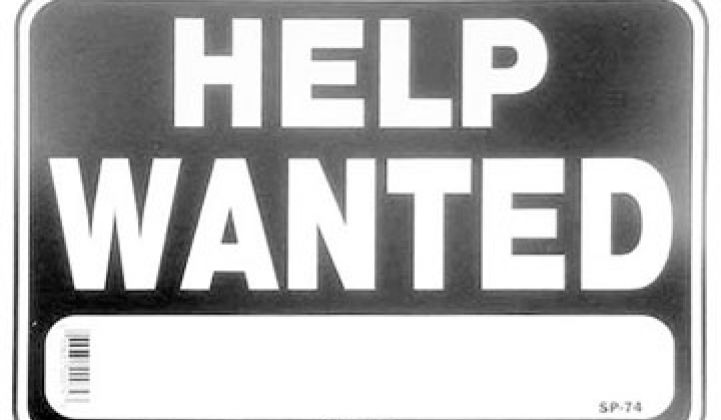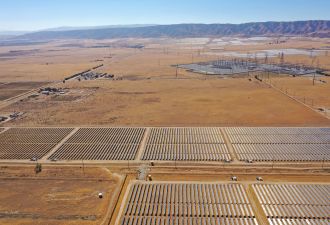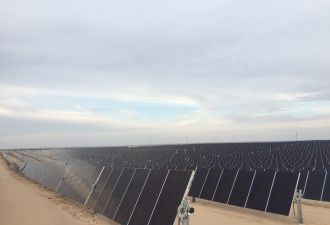Requirements: Direct to consumer marketing track-record, voice-of-the-customer expertise, politically savvy firefighter. Social media expertise is a plus.
There’s a new role emerging at utilities. It’s called Chief Customer Officer (CCO). 'CCO' has become a fashionable design-your-own-title for aspiring marketers in a wide swath of industries (there’s even a CCO Council that celebrates all things CCO-related). But it’s a role that is just now starting to pop up in the “better late than never” utility industry. Utilities sporting CCO-business-card-bearers include PG&E, Duke Energy, APS and ONCOR . (You might get some of these business cards at GridWeek, which is taking place this week.)
Is the utility CCO an emerging trend or a temporary anomaly? Other than fashion, what’s driving the new title? And more importantly, why bother? Do consumers really care about energy?
Gianna Manes, CCO for Duke Energy, says customer experiences in other industries are raising the bar for utilities. According to Manes, “How customers expect us to interact with them is being driven by their experiences with online banking and shopping.” This is causing Duke Energy to take a hard look at their points of customer interaction and how to beef them up. Manes says her new CCO title (she was an SVP before) "is an outward sign and an inward sign. We are rededicating ourselves to become more customer-centric.” Voice-of-the-customer research also ranks high on Manes’ list of priorities: “We are spending a lot of time asking customers questions and listening.” Managing Duke Energy’s smart meter rollout is also under Manes’ purview.
Manes sees customer interest and interactions increase as her company rolls out smart meters, starting with Ohio. “We’ve seen people get a little more curious. Some customers don’t care, others are getting more engaged. For instance, if it’s summer and it’s hot, we can give them information on what they can do to use less energy and save money.” Consumer research by Accenture has also identified market segments with interests in saving money and the environment.
But Mike Riggins, principal in the Utility Group at North Highland, a strategic consultancy, says that some of the motivation behind the CCO title may be reactive as well as symbolic. According to Riggins, “Some of the CCO movement is a reactive play to show public utility commissions that utilities are taking customer service seriously. This is probably a rebranding of a position that existed before, but it’s a tangible demonstration that utilities are reaching across the table to the consumer.”
Riggins also sees behavior modification as a make-or-break proposition for the smart grid. “Ultimately, if we as consumers don’t change our behaviors, we won’t get what we are looking for from the smart grid. We won’t be able to achieve climate goals and cost savings from not bringing generation online.”
According to Riggins, actions speak louder than words. “Just creating the CCO title is window dressing unless you are backing it up with actions.”
Tammy McLeod of the Arizona Public Service (APS) may hold claim to being the longest-running CCO title holder. Her job title dates back to 2007. Terry has a strong track record as a change agent. APS has racked up several customer service awards, rolled out new conservation programs to get customers to shave consumption during heat waves, and even hired Phoenix Suns basketball hero and Prius-driving sensation Steve Nash to promote solar energy projects and energy conservation.
Both North Highland consultant Riggins and Duke CCO Manes see opportunities for utilities to develop value-added programs like demand response, as well as to become proactive energy advisors. For utilities steeped in the predictable world of capital investment and cost recovery, this amounts to a tectonic shift in focus. According to Manes, “Right now, we have account executives that work one-on-one with industrial customers to help them with energy management and even with making capital investment decisions. In the future, we want to take that model into the residential sector, but on a larger scale.” Utilities obviously can’t afford to provide this one-on-one relationship, but technology provides some interesting possibilities for scaling the number of relationships from thousands to millions.
Riggins picks proactive customer service in the wireless world as the benchmark for utilities. Wireless carriers use real-time business intelligence to model customer usage patterns against available plans so customer service reps can make on-the-spot recommendations for plans that will save customers money.
Unfortunately, utilities appear to be a long way off from providing program recommendations during a short phone call -- or even in a snail-mail billing statement. Beyond the programs themselves (dynamic pricing is just getting off the ground in a few markets like San Diego), a recent GTM Research report on meter data management found basic data warehousing to be a major gap in the softgrid marketplace.
For now, vanguard smart grid utilities have their hands full getting smart meters installed, up and running, and billing. Meanwhile CCOs and their SVP peers are scrambling to put basic customer relationship infrastructure in place to deal with uppity consumer activists, and to prepare for the day when their companies get regulatory approval to implement the pricing structures and programs that enable them to become proactive providers of energy management solutions.



